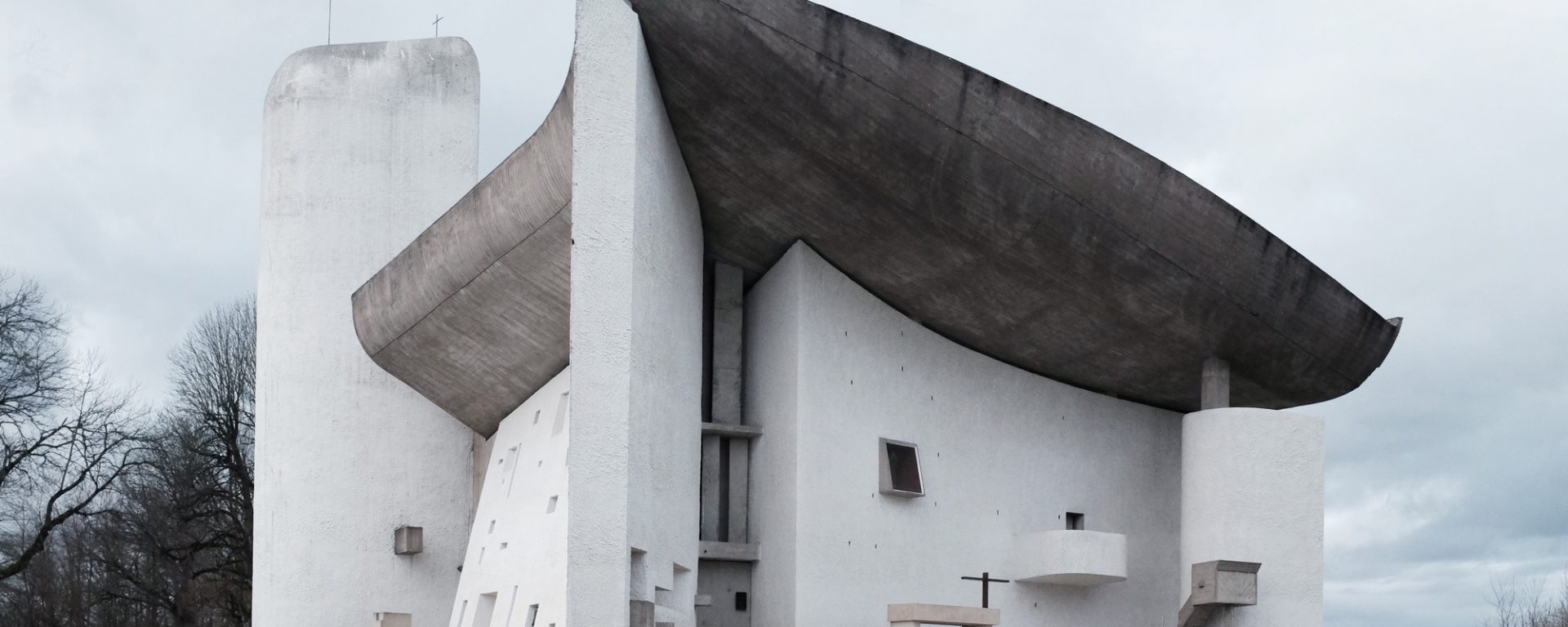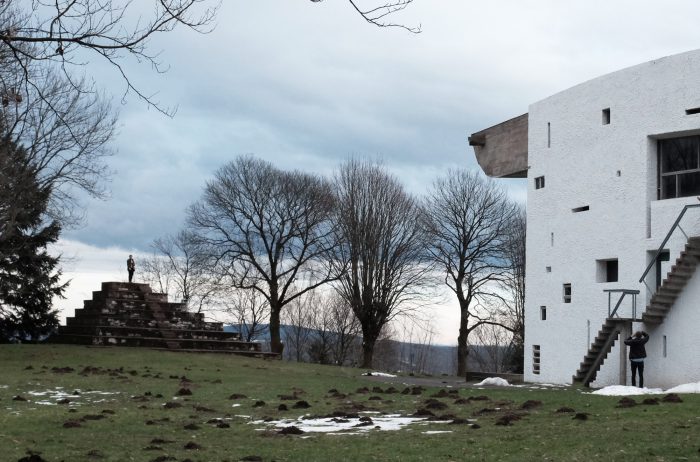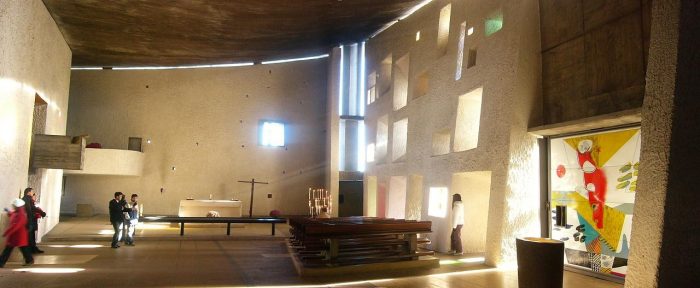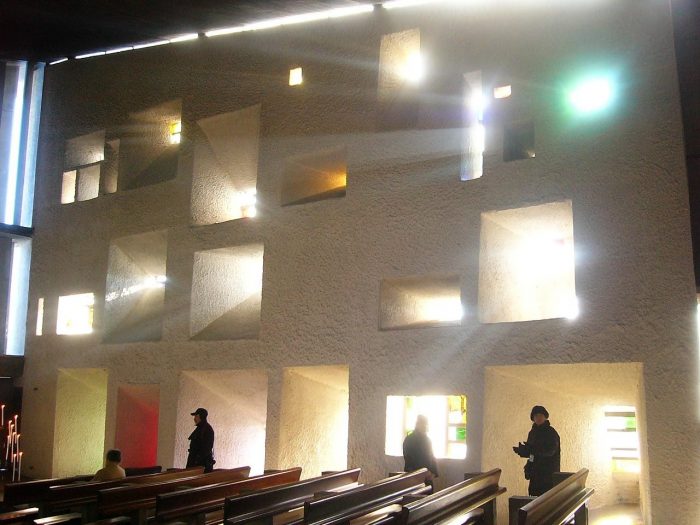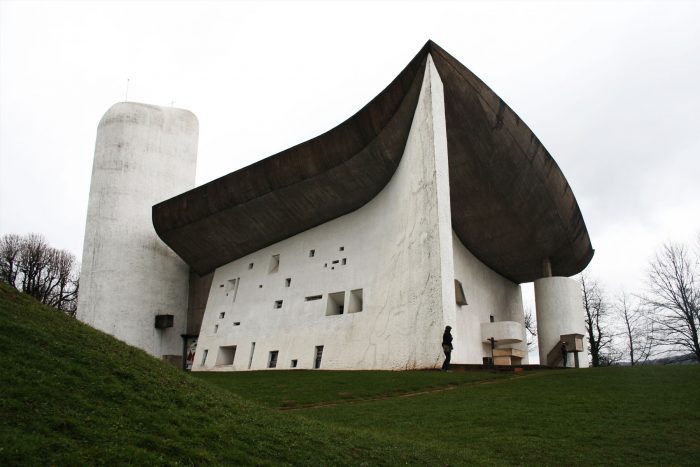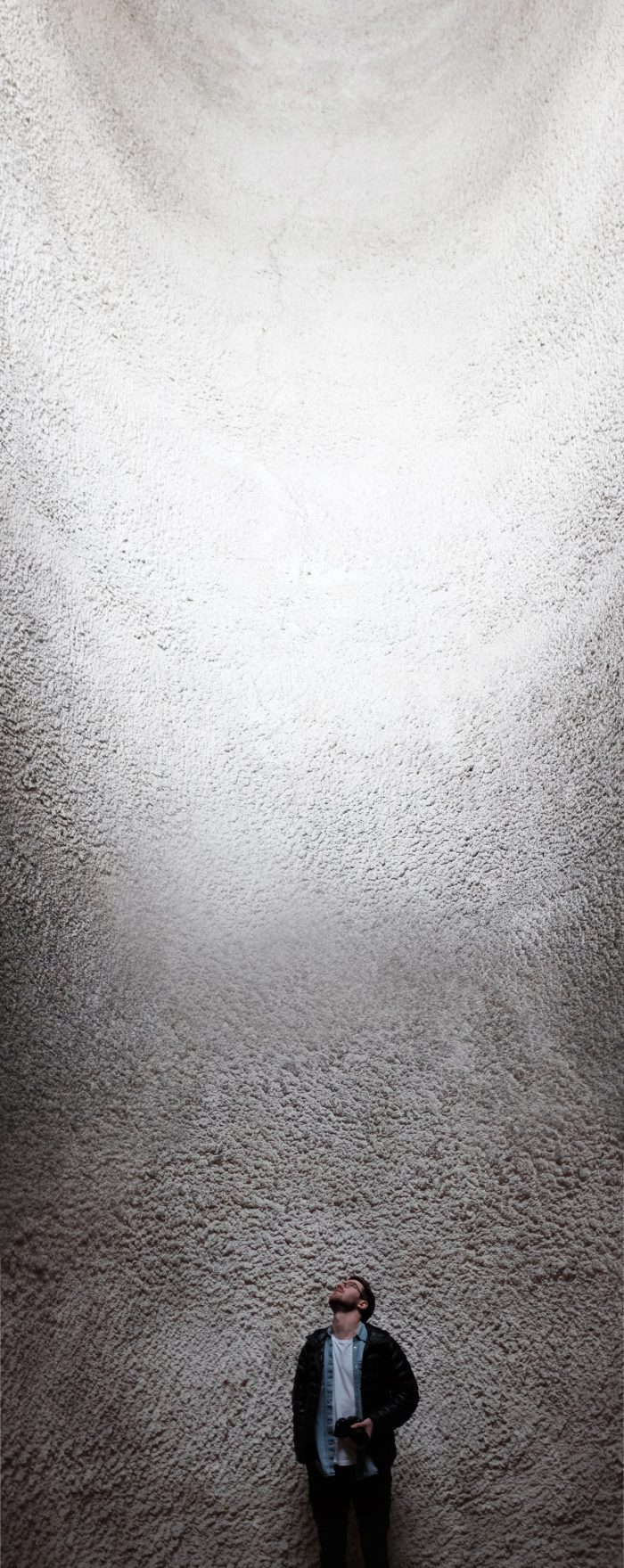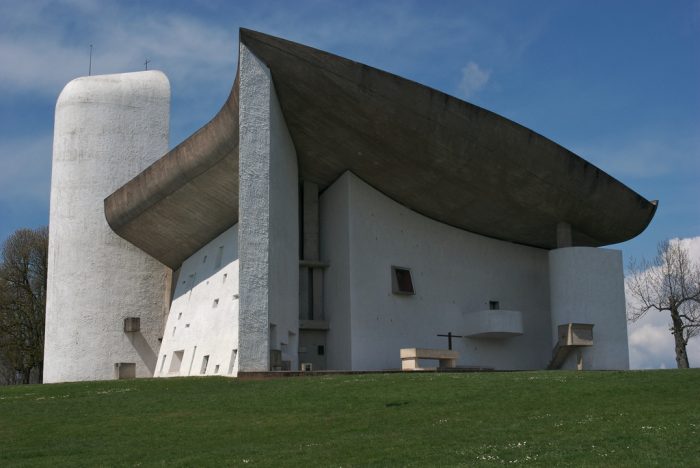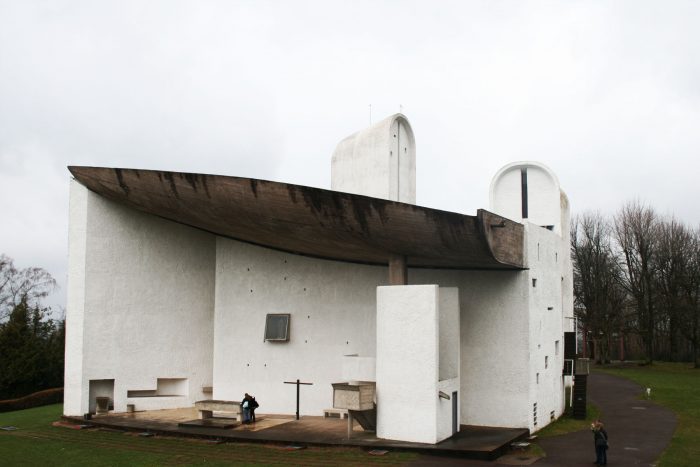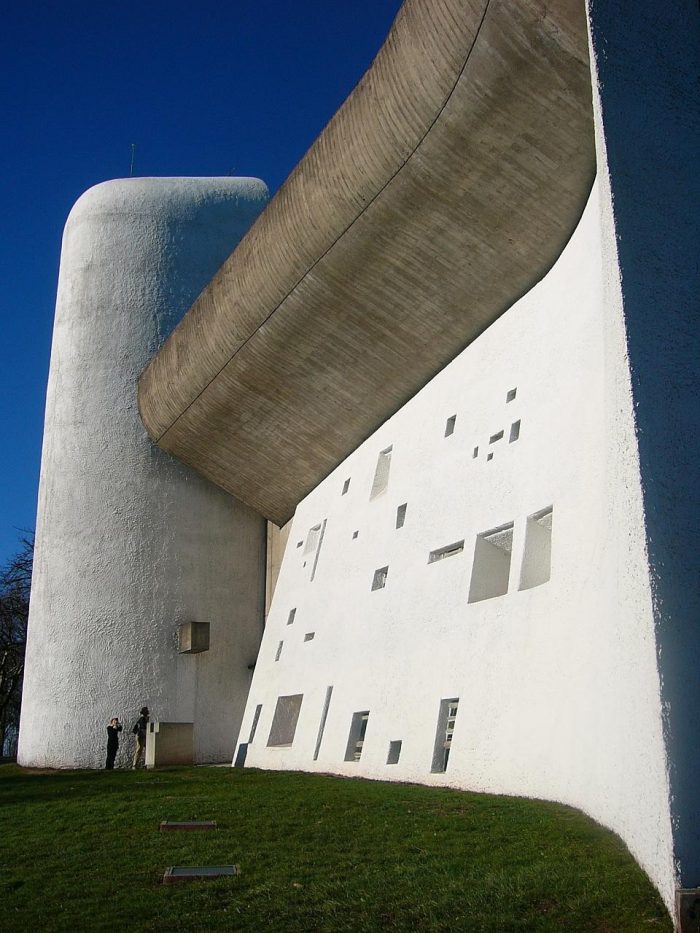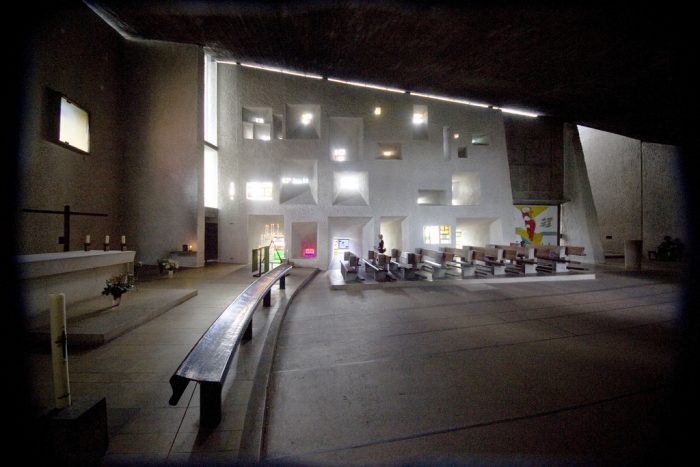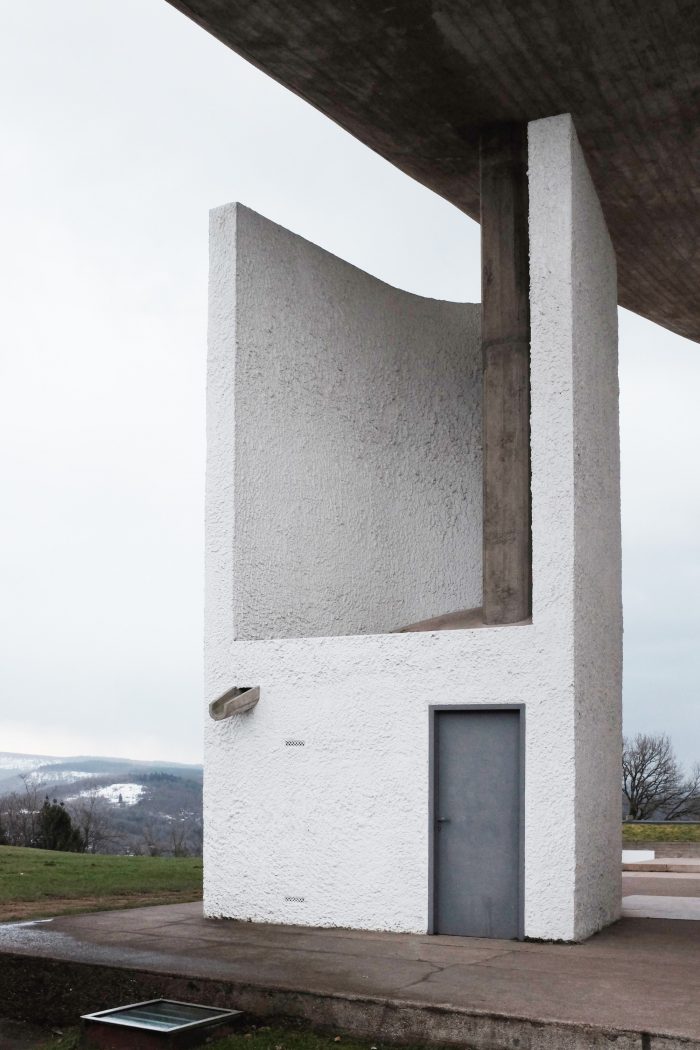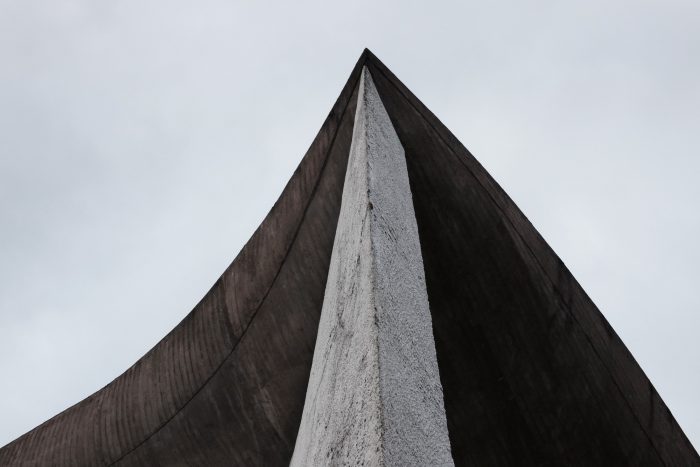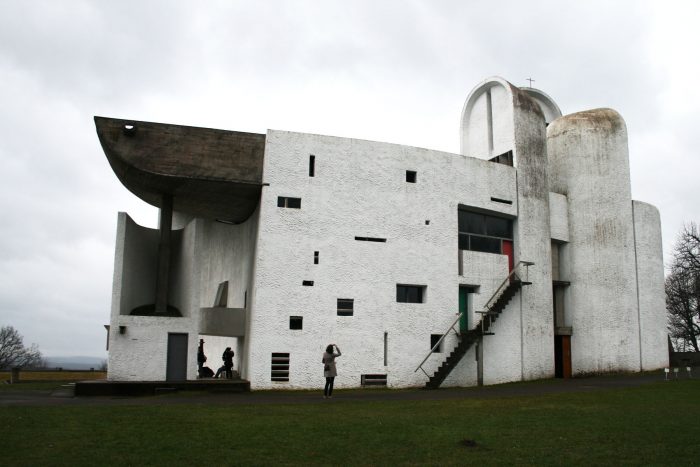在巴黎东部稍南的朗尚公社,坐落着勒-柯布西耶职业生涯中最不寻常的项目之一–朗尚圣母院,或更多地被称为朗尚。 1950年,勒-柯布西耶受命设计一座新的天主教堂,以取代之前在二战期间被毁的教堂。
In the commune of Ronchamp, slightly south of east of Paris, sits one of Le Corbusier’s most unusual projects of his career, Notre Dame du Ronchamp, or more commonly referred to as Ronchamp. In 1950, Le Corbusier was commissioned to design a new Catholic church to replace the previous church that had been destroyed during World War II.
长期以来,朗尚所在地一直是根植于天主教传统的宗教朝圣地,但二战后,教堂希望有一个纯净的空间,没有奢华的细节和华丽的宗教人物,不同于之前的教堂。 隆昌的现代感很强,它并不是作为柯布西耶美学的一部分,甚至也不是作为国际风格的一部分出现的,而是作为一个雕塑的对象出现在场地中。 无法归类的隆昌使它成为20世纪最重要的宗教建筑之一,同时也是柯布西耶的职业生涯。
The site of Ronchamp has long been a religious site of pilgrimage that was deeply rooted in Catholic tradition, but after World War II the church wanted a pure space void of extravagant detail and ornate religious figures unlike its predecessors. Ronchamp is deceptively modern such that it does not appear as a part of Corbusier’s aesthetic or even that of the International Style; rather it sits in the site as a sculptural object. The inability to categorize Ronchamp has made it one of the most important religious buildings of the 20th Century, as well as Corbusier’s career.
1950年,当柯布西耶受命设计朗尚时,教会改革派希望通过接受现代艺术和建筑来洗刷过去的颓废和装饰性。 空间上的纯粹性是柯布西耶的主要关注点之一,他没有将方案过于复杂化,也没有将典型的现代美学从设计中去除。
In 1950, when Corbusier was commissioned to design Ronchamp, the church reformists wanted to clear their name of the decadence and ornamental past by embracing modern art and architecture. Spatial purity was one of Corbusier’s main focuses by not over complicating the program and removing the typical modern aesthetic from the design.
相反,Corbusier希望空间的目的是沉思和反思。 鲜明的白墙增加了这种纯粹主义的心态,当光线进入小教堂时,就会有这种冲淡、空灵的气氛。 光线的效果唤起了表现力和情感的特质,使人产生与宗教活动相一致的高度感觉。
Instead, Corbusier wanted the space to be meditative and reflective in purpose. The stark white walls add to this purist mentality that when the light enters into the chapel there becomes this washed out, ethereal atmosphere. The effect of the light evokes expressive and emotional qualities that create heightened sensations in tune with the religious activities.
Ronchamp坐落在一片树林中,与公社的其他地方隔绝;教堂被安置在一个小山顶上,将自己设置在一个隐喻的基座上,使Ronchamp更加重要。 与柯布西耶的其他作品不同,隆尚的作品更多的是一种不规则的雕塑形式,墙壁、屋顶和地板都是倾斜的。 从风格和形式上看,它是相当复杂的;但是,从程式上看,它是相对简单的:两个入口、一个祭坛和三个小教堂。
Ronchamp sits among a wooded terrain secluded from the rest of the commune; the chapel is placed atop a hill on the site setting itself on a metaphorical pedestal giving Ronchamp added importance. Unlike most of Corbusier’s other works consisting of boxy, functional, and sterile volumes, Ronchamp is more of an irregular sculptural form where the walls, the roof, and the floor slope. Stylistically and formally it is fairly complex; however, programmatically it is relatively simple: two entrances, an altar, and three chapels.
Ronchamp 的墙体赋予了建筑雕塑般的特征。厚厚的(4′-12’厚)、平缓的弧形墙体作为一种实用的方法来支撑混凝土和砖石结构,以及巨大的弧形屋顶。 然而,这些墙体并不仅仅是作为结构和雕塑元素,它们还起到了声学放大器的作用,特别是在东面外墙的情况下,它将声音从室外祭坛反射到场外。
The walls of Ronchamp give the building its sculptural character. The thick (4’-12’ thick), gentle curving walls act as a practical method of supporting the concrete and masonry construction, as well as the massive curvilinear roof. However, the walls do not solely act as structural and sculptural elements; they also act as acoustic amplifiers, especially in the case of the eastern exterior wall that reflects the sound out over the field from the outdoor altar.
Ronchamp最引人注目的部分是向天际倾斜的弧形屋顶。 弯曲的屋顶似乎漂浮在建筑上方,因为它由墙壁上的嵌入式柱子支撑着,这在屋顶和墙壁之间形成了10厘米的缝隙,这使得神龛的光线可以有一丝丝的照射。 屋顶其实是Ronchamp整体设计中唯一一丝机械化的影响,屋顶的弧度模仿了飞机机翼的曲线。 它的设计符合空气动力学原理,在其庞大厚重的特质下,仍然显得毫无重量。
The most striking part of Ronchamp is the curved roof that peels up towards the heavens. The curving roof appears to float above the building as it is supported by embedded columns in the walls, which creates a 10 cm gap between the roof and the walls, which allow for a sliver of clerestory light. The roof is actually the only glimpse of mechanized influence in the overall design of Ronchamp; the roof’s curvature mimics the curves of an airplane wing. It’s aerodynamic in design and in all of its massive and heavy qualities it still appears weightless.
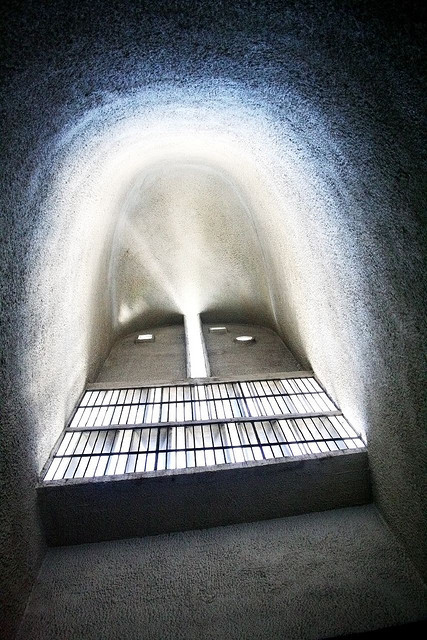
设计中最有趣的一个方面是墙壁上零星的窗户位置。柯布西耶在立面上实施了小的穿孔,通过在墙体空腔中渐渐缩小窗井,放大了教堂内的光线。 每一面墙都会被这些不同的窗框所照亮,与赤白的洗墙相结合,使墙面具有发光的特质,点缀着更强烈的直射光。在小教堂祭坛后方的墙壁上,灯光效果创造了一个斑驳的图案,几乎就像星空一样,稀疏的开口与十字架上方的一个更大的开口相得益彰,发出了泛滥的光,创造了一个强大的宗教形象以及变革的体验。
One of the most interesting aspects of the design is the sporadic window placement on the walls. Corbusier implemented small puncturing apertures on the façade that amplified the light within the chapel by tapering the window well in the wall cavity. Each wall becomes illuminated by these differing window frames, which in conjunction with the stark white washed walls gives the walls luminous qualities punctuated by a more intense direct light. On the wall behind the altar in the chapel, the lighting effects create a speckled pattern, almost like a starry night, of sparse openings that are complimented by a larger opening above the cross that emits a flood of light, creating a powerful religious image as well as a transformative experience.
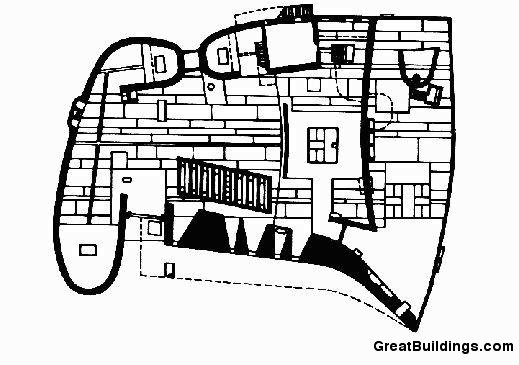
从Ronchamp下面的田野上看,弯曲的墙壁和屋顶是对教堂的形式界定。它似乎是直接从山丘本身生长出来的,因为屋顶的曲线似乎是教堂所处曲线的一面镜子。然而一旦进入教堂,弯曲的墙壁和屋顶不再定义项目的纯粹本质,相反,光线才是定义和赋予教堂经验意义的关键。
From the field below Ronchamp, the curving walls and roof are what define the chapel formally. It appears as if it is growing directly from the hill itself as the curve of the roof seems to be a mirror of the curve that the chapel sits on. However once inside, the curving walls and roof no longer define the pure essence of the project, rather the light is what defines and gives meaning to the chapel experientially.
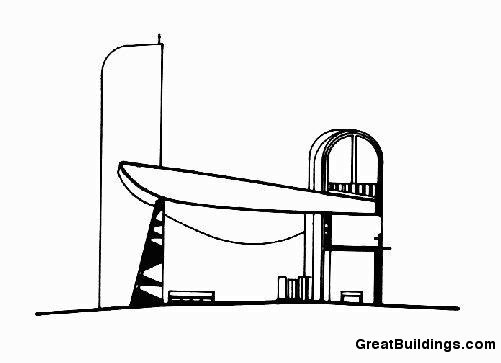
即使,Ronchamp是勒-柯布西耶其他作品的激进派生,但它仍然保持了一些相同的原则,即纯粹、开放和共同的感觉。 Ronchamp并不是脱离机械主义、国际风格,因为它更多的是对宗教场所的情境反应。Ronchamp是一个植根于情境的建筑,它以现代原则为基础,这使得Ronchamp成为20世纪以及勒-柯布西耶职业生涯中最有趣的建筑之一。
Even though, Ronchamp was a radical derivation from Le Corbusier’s other works, it still maintains some of the same principles of purity, openness, and communal sense of coming together. Ronchamp was less of a move away from the mechanistic, International Style, as it was more of a contextual response to a religious site. Ronchamp is an architecture rooted in context that’s based on modern principles, which makes Ronchamp one of the most interesting buildings of the 20th Century and of Le Corbusier’s career.
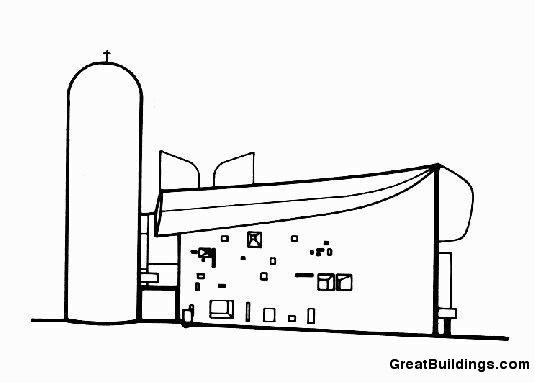
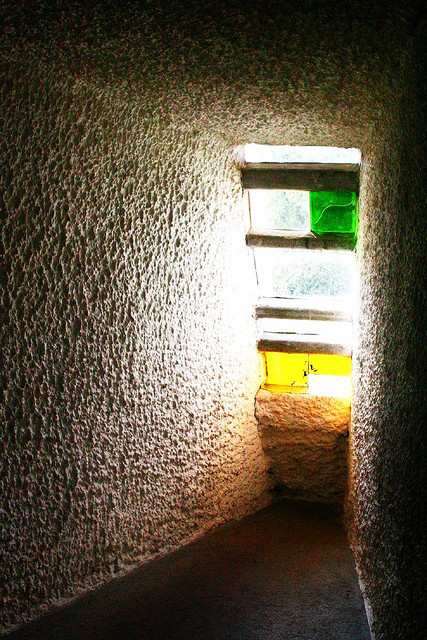
建筑师:Le Corbusier
年份:1954年
摄影作品:Gili Merin, Rory Hyde, Cara Hyde-Basso, Sebastian Bernardy, Luke Stearns, Pieter Morlion, Flickr
用户:elyullo
城市: 巴黎
国家:法国
Architects: Le Corbusier
Year: 1954
Photographs: Gili Merin, Rory Hyde, Cara Hyde-Basso, Sebastian Bernardy, Luke Stearns, Pieter Morlion, Flickr User: elyullo
City: Paris
Country: France

